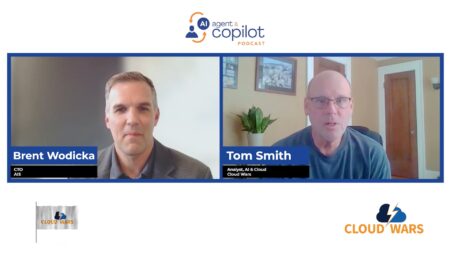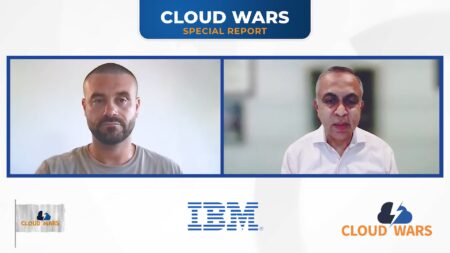In the IT world, there’s always a lack of talent; more specifically, a need for developers. But in recent years, this urgency seems to have intensified. The U.S. Labor Department estimates that the software engineer shortage in the USA will increase to almost 1.2 million by 2026. LinkedIn also reports that required software and IT skills have increased by 30.7% since 2015. The talent supply simply can’t keep up with the demand.
It’s challenging to recruit and retain talented programmers. This reality can stunt digital transformation and new customer-facing applications. Furthermore, cybersecurity experts are desperately needed to respond to rising software supply chain threats, as are cloud experts required to get an edge with cloud-native technologies. These advancements simply aren’t possible without talented individuals who intimately understand the technology necessary to get the job done.
The urgency to progress application development, paired with the lack of skillsets, has some leaders thinking outside the box. I recently met with Patrick Jean, CTO, OutSystems, to explore how organizations can survive amidst ongoing development shortages. According to Jean, there’s not only a developer shortage but a time shortage at hand. Investing in automation, reducing toil, and upskilling employees are ways to leverage your existing resources in new ways. Below, we’ll consider these and other methods to help navigate the ongoing IT talent gap.
1. Train existing developers.
One way to close the skills gap is to empower your existing developers with the skills they need to be productive with modern development styles. Software trends are constantly accelerating, making it difficult to keep pace. This is one area where software development platforms could assist, says Jean. “The platforms definitely augment developers in areas that either they don’t want to explore, or they’re not skilled at,” he said. These platforms could quickly empower a .NET or Java developer, for example, to utilize a range of cloud-native skill sets.
2. Upskill other employees.
In addition to upskilling developers, another tactic is to upskill employees from other backgrounds to become developers using low-code/no-code tools. These knowledge workers, or citizen developers as they are sometimes called, often possess domain knowledge and are technologically literate, yet are not career developers. Here, training and governance are necessary to promote an effective citizen development strategy. “Training is part of it, and also really educating people that it’s accessible to them,” said Jean.
3. Reduce toil.
Tedious processes lead to wasted time, which compounds the development shortage issue. Thus, it’s a good practice to identify and reduce toil wherever possible. This is the manual legwork required in an engineer’s day-to-day workflow that really should be automated away. Jean describes toil as “unnecessary heavy lifting that doesn’t get my apps in the hands of the end user.” By dedicating less time to toil, organizations could free developers to focus more on the work that matters.
4. Invest in automations.
Along the line of reducing toil is the concept of automation — automating repetitive tasks can save time and effort. “Automation is key to furthering your adoption and use of the cloud,” said Joe Spurrier, Chief Technology Officer and co-founder of cloudtamer.io. But of course, as we’ve found before, too much automation can bring negative consequences. Technology leaders must carefully balance the benefits and pitfalls of software automation and build human-in-the-loop workflows that don’t produce more toil.
5. Share reusable templates
Another way to free up development resources is to reduce duplicative effort. Central repositories can be utilized to share reusable frameworks and standard policies and disseminate best practices. This can help teams de-silo and build upon one another.
The caveat, explains Jean, is that the traditional development process is prone to bespoke nuances, making it harder to port a common component from project to project. He espouses the benefits of a shared development platform to enable such reusability and collaboration. “The goal should be to decrease latency and cognitive load, from ideation to the end result,” he said.
6. Improve developer experience.
Developer experience (DX) is similar to user experience but is associated with the friction a developer encounters when working with a software tool. Increasing the developer experience for internal software systems is one way to improve overall satisfaction, which can help reduce burnout and resignations. One concept that could negatively affect developer experience is software disintegration. “As soon as you release software, it starts to disintegrate,” said Jean. To keep on top of API deprecations or bugs, it could make sense to outsource some of the maintenance hurdles to keep the status quo, he says.
7. Allow remote work.
Another method to attract a broader talent base is to allow for more flexible working arrangements. But, Jean takes this one step further, suggesting a “work from wherever and whenever” arrangement. Everyone ultimately has a personal life schedule and feels inspired at different times of the day.
Altering corporate policy to embrace remote, flexible working conditions can result in less turnover. “We’ve been able to retain some really brilliant people [who] could have made more money elsewhere,” described Jean. Of course, building productive remote working teams doesn’t come without its challenges.
8. Instill a positive culture.
If all else fails, the reality may be that you can’t attract talent due to your company culture. Beyond remote work, executives might see less turnover by respecting weekends, “down days,” and paid time off. Some CEOs are even promoting collaborative gaming as a means to form positive relationships in the workplace. Burnout can also arise from a lack of a sense of purpose, explained Jean — especially when the amount of effort you put in is not equated to the output. Trusting teams to work autonomously, setting realistic performance targets, and investing in ESG initiatives are possible ways to deliver a stronger sense of purpose.
Final Thoughts: Mitigating Talent Gaps
The reality is that we need more developers to match the rapid velocity of software development. “It’s not good for society when only 0.5% of users are coders,” said Jean. But until development shortages are a thing of the past, leaders will need creative ways to maintain the status quo.
According to Jean, this means removing the stigma associated with low-code/no-code development. “Low-code is prime-time ready, and early movers will be the ones that benefit significantly.” By combining these tips and tricks, organizations should be better equipped to retain existing developers and onboard new ones while still meeting their targets.
Want more cybersecurity insights? Visit the Cybersecurity channel:







